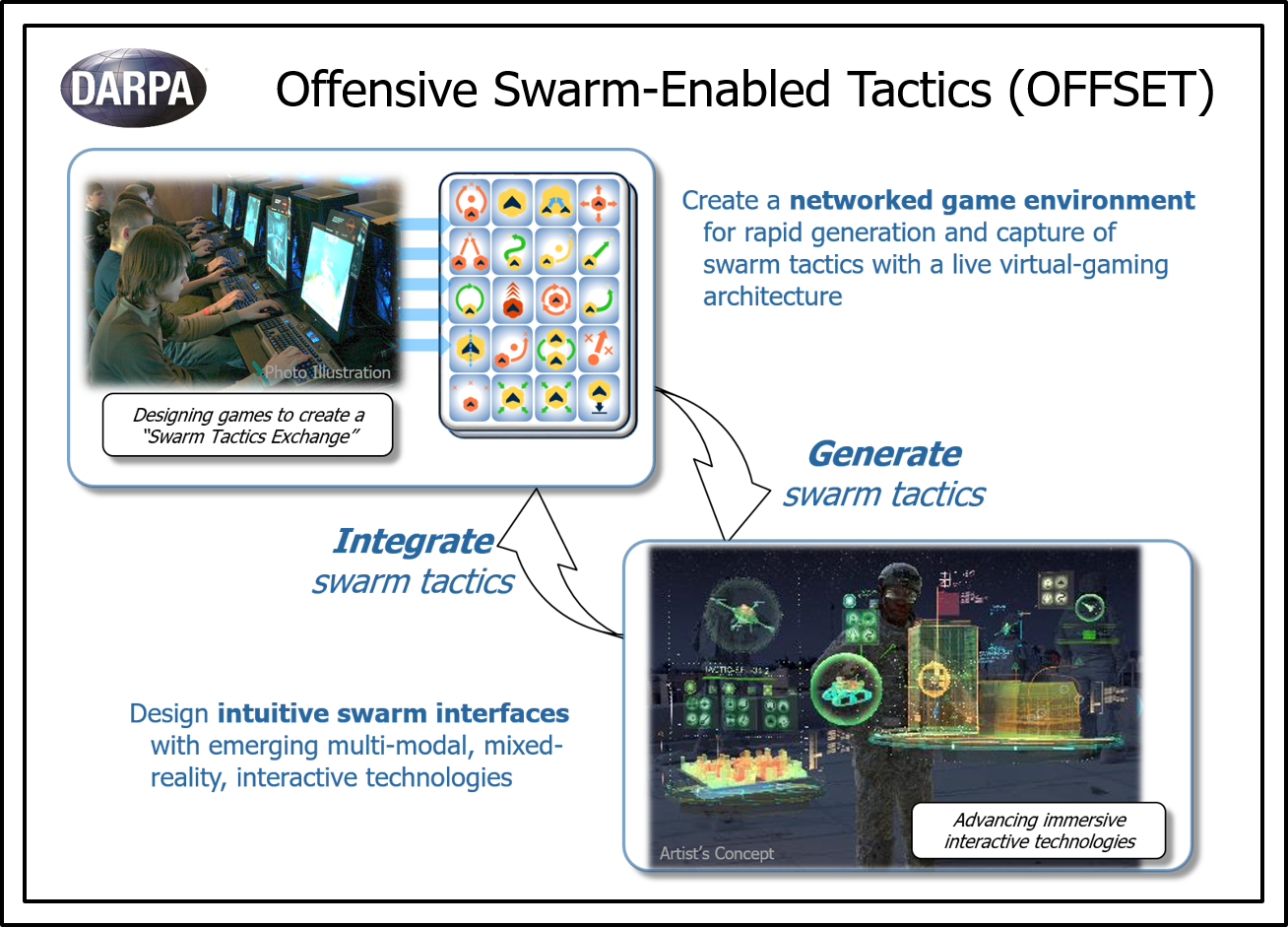The Air Force announced last month it was studying bats as a way to make drone swarms more effective. But the Department of Defense, and more specifically the Defense Advanced Research Programs Agency, or DARPA, is experimenting with a series of nature-inspired programs for new battlefield technologies.
DARPA’s Biological Technologies Office is leading the effort.
Here are four programs that are researching what the military can learn from the nuances in nature.
OFFSET (Offensive Swarm-Enabled Tactics)

Birds, fish, insects - even humans - naturally form groups and communities.
When these populations reach a certain density, individual thought forms a collective consciousness. Think about when a flock of birds suddenly change direction all at once, when a school of fish form a ball to confuse attacking predators, or when millions of locust take flight simultaneously.
DARPA’s OFFSET (Offensive Swarm-Enabled Tactics) program is studying this phenomena in an attempt to integrate this behavior into a swarm of weaponized drones. DARPA has enlisted developers to create a game environment that experiments with swarm tactics in a virtual environment.
The developers are designing an intuitive system that soldiers can control a swarm of drones via voice and gesture recognition as well as augmented and virtual reality.
“With the technologies and tactics to be developed under OFFSET, we anticipate achieving a deeper understanding of how large numbers of increasingly autonomous air and ground robots can be leveraged to benefit urban warfighters,” said Timothy Chung, a DARPA program manager, said in a press release.
APT (Advanced Plant Technologies)
What if a military base had been compromised and no one recognized it?
In case of an invisible attack, DARPA’s APT (Advanced Plant Technologies) program is working on genetically modifying plants to have them serve as early-warning sensors for certain chemicals, pathogens, radiation and electro-magnetic signals.
Many plants already release chemicals to signal to other plants, and sometimes insects, that it is under stress. In those cases, the plant releases the chemicals, known as green leaf volatiles.
For example, some plants emit the organic alcohol 3-Hexanol when attacked. Certain species of parasitic wasps find 3-Hexanol particularly enticing and fly to the plant to attack and kill the feeding insects.
APT would try to reengineer this response system to detect attacks and alert military communication systems.
“Plants are highly attuned to their environments and naturally manifest physiological responses to basic stimuli such as light and temperature, but also in some cases to touch, chemicals, pests, and pathogens,” said Blake Bextine the APT program manager said in a press release.
Insect allies
DARPA’s Insect Allies program is an attempt to use insects to transfer genetic material between mature plants within a single-growing season. The purpose of this project is to help preserve national security and a stable food supply in the case of a drought, flooding or an attack on the U.S. crop system.
Typically, genetically modified plants are altered at the embryonic level. This program is attempting to engineer specific genes, place them within plant viruses, and have insects contract those viruses and spread them from plant to plant.
“Insects eat plants and insects transmit the majority of plant viruses,” said Dr. Bextine. “DARPA plans to harness the power of this natural system by engineering genes inside plant viruses that can be transmitted by insects to confer protective traits to the target plants they feed upon.”
To help make this a reality, DARPA awarded a four-year, $10.3 million contract to researchers at four universities.
Ecological Niche Preference Engineering
You can’t grow a pine tree in a desert. Or can you?
DARPA’s Ecological Niche Preference Engineering Program is attempting to alter the way organisms interact with their surrounding environment. Just like Insect Allies, the Ecological Niche Preference Engineering Program focuses on protecting our food supply in the case of natural disasters and state attacks.
One of the researchers working on the project, Michael Smanski of the University of Minnesota, is working on engineering reproductive barriers to accelerate niche differentiation.
“Niche differentiation refers to a process by which two species adapt to live in different unique microenvironments/ecological roles,” said Smanski. “For the DARPA-funded project, we will engineer reproductive barriers in a model organism (nematodes) and perform a laboratory evolution experiment that will favor the evolution of niche-differentiation (for example evolving strains of nematodes that prefer different food sources).”
DARPA has said the control and altering of organisms will lead to reduced economic, health and resource burdens.
“I would classify our DARPA funded research as basic research, not applied research. However, it could lead to some interesting applications, for example developing non-GMO organisms that could be released to combat agricultural pests or clean up the environment,” Smanski said.








